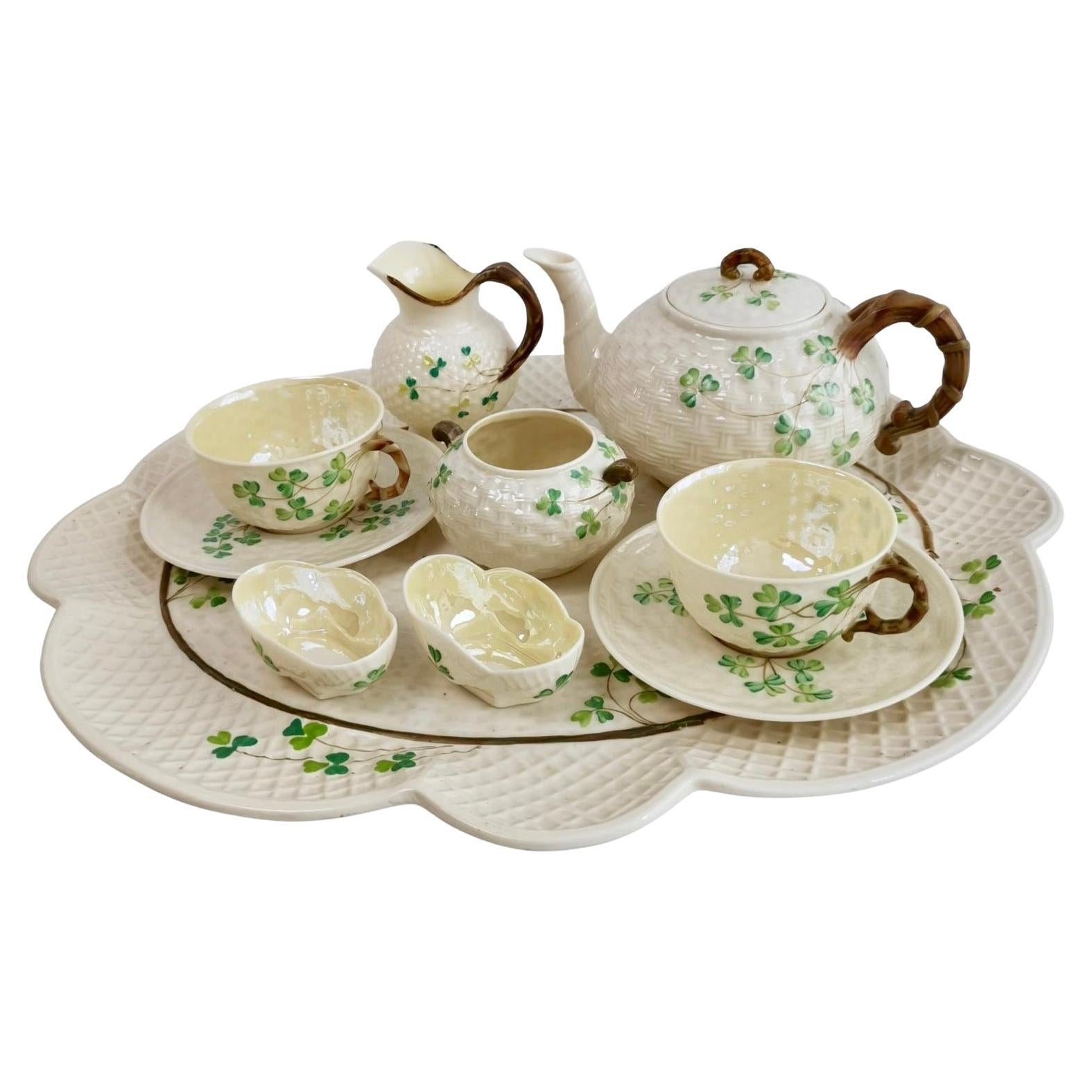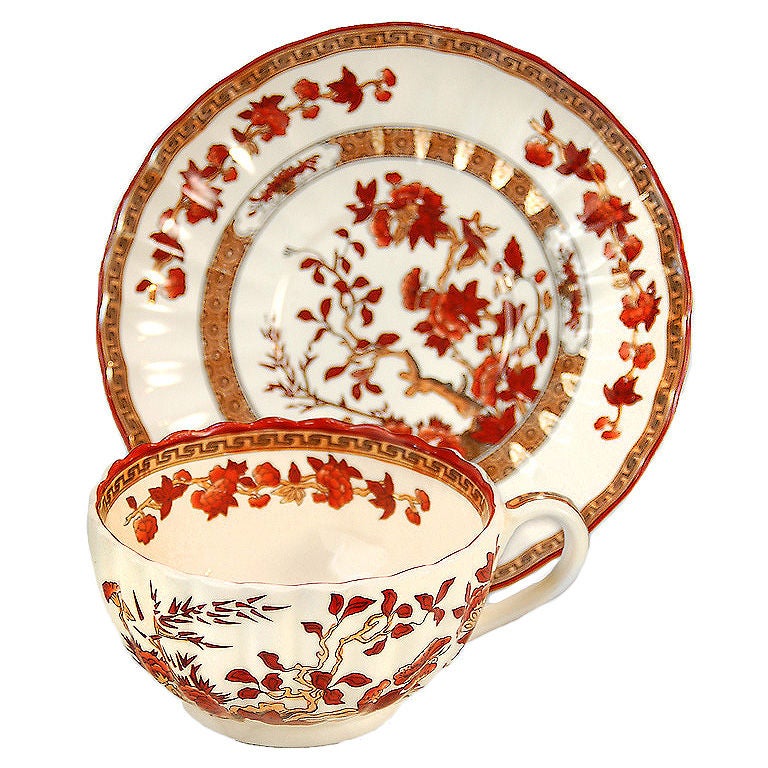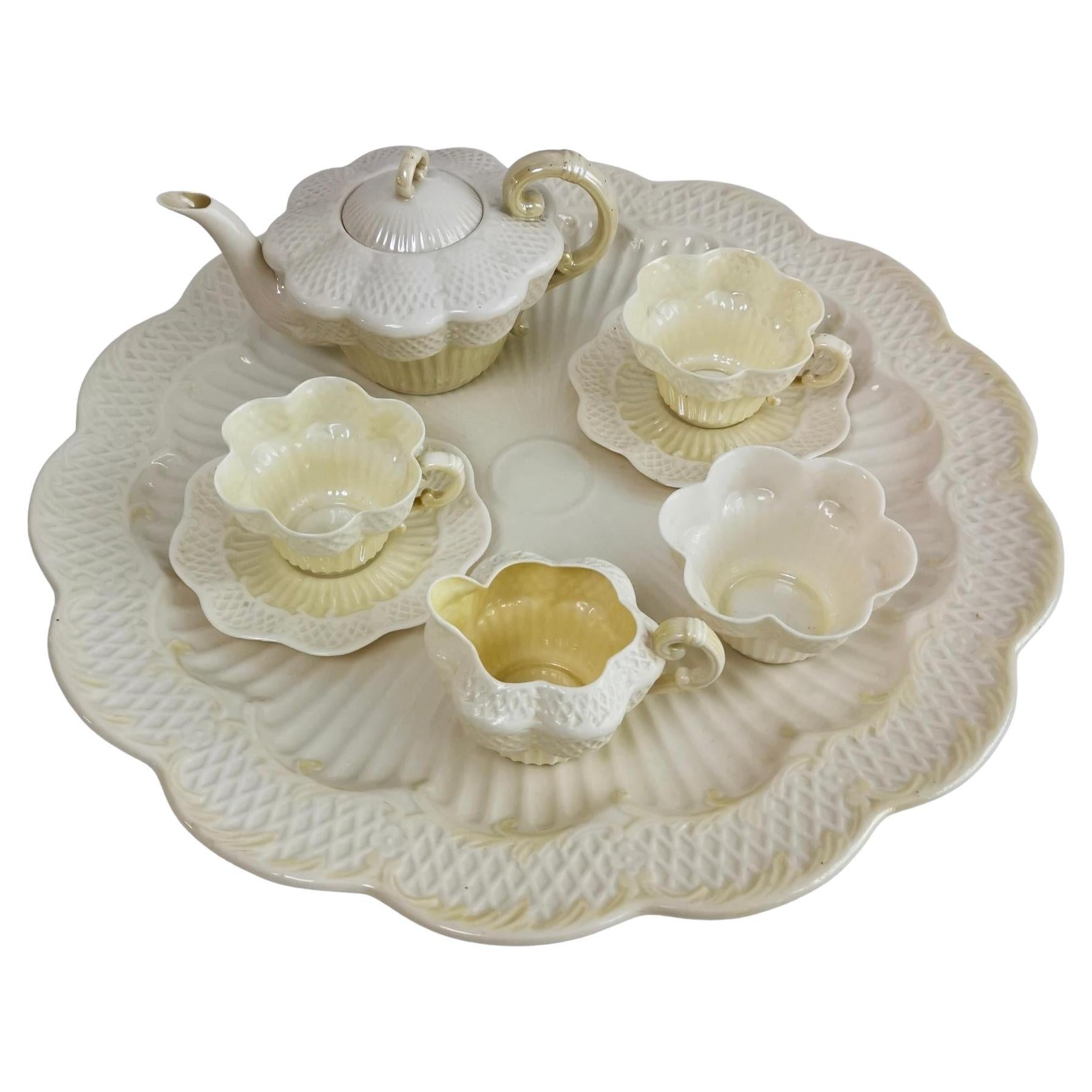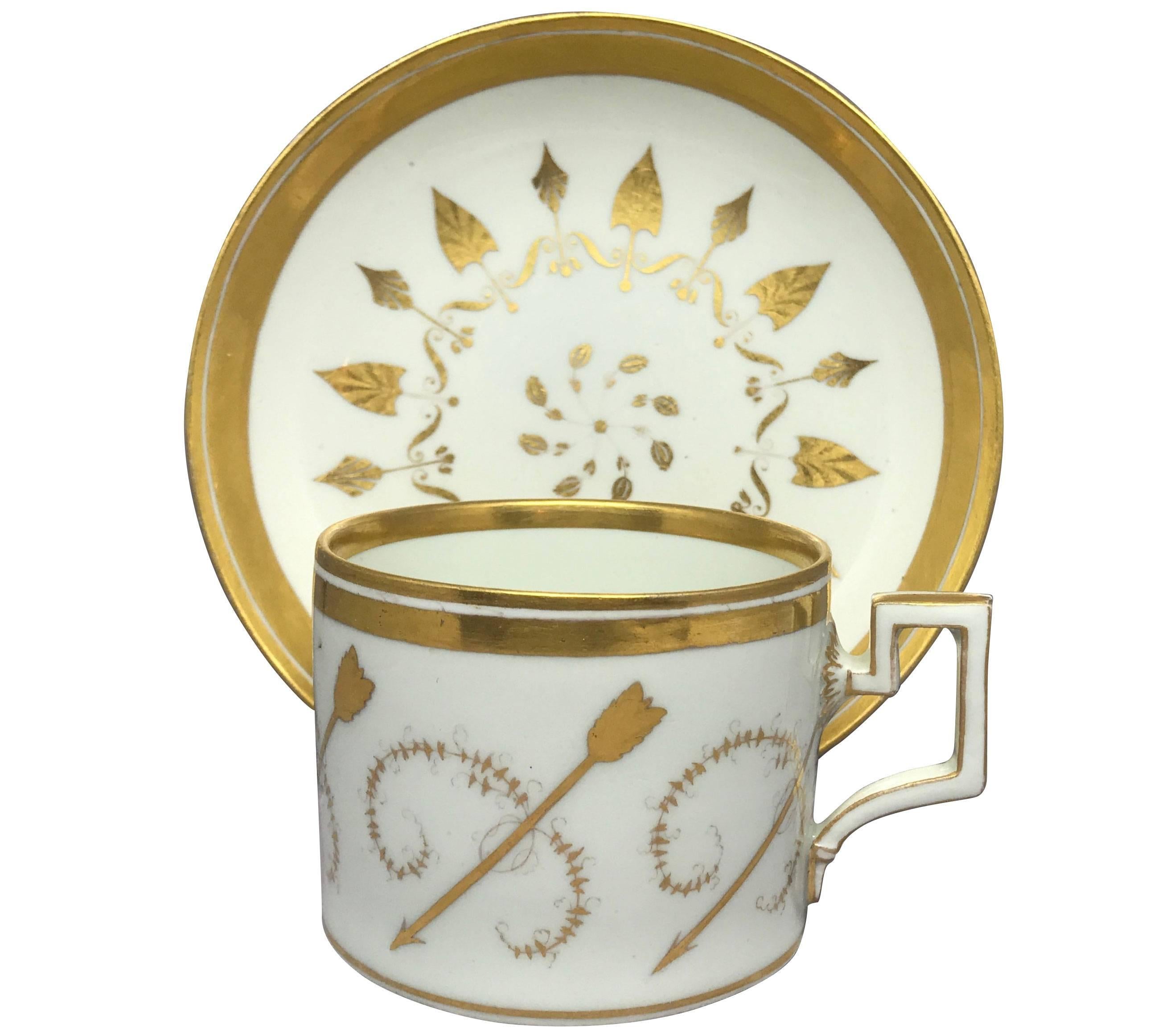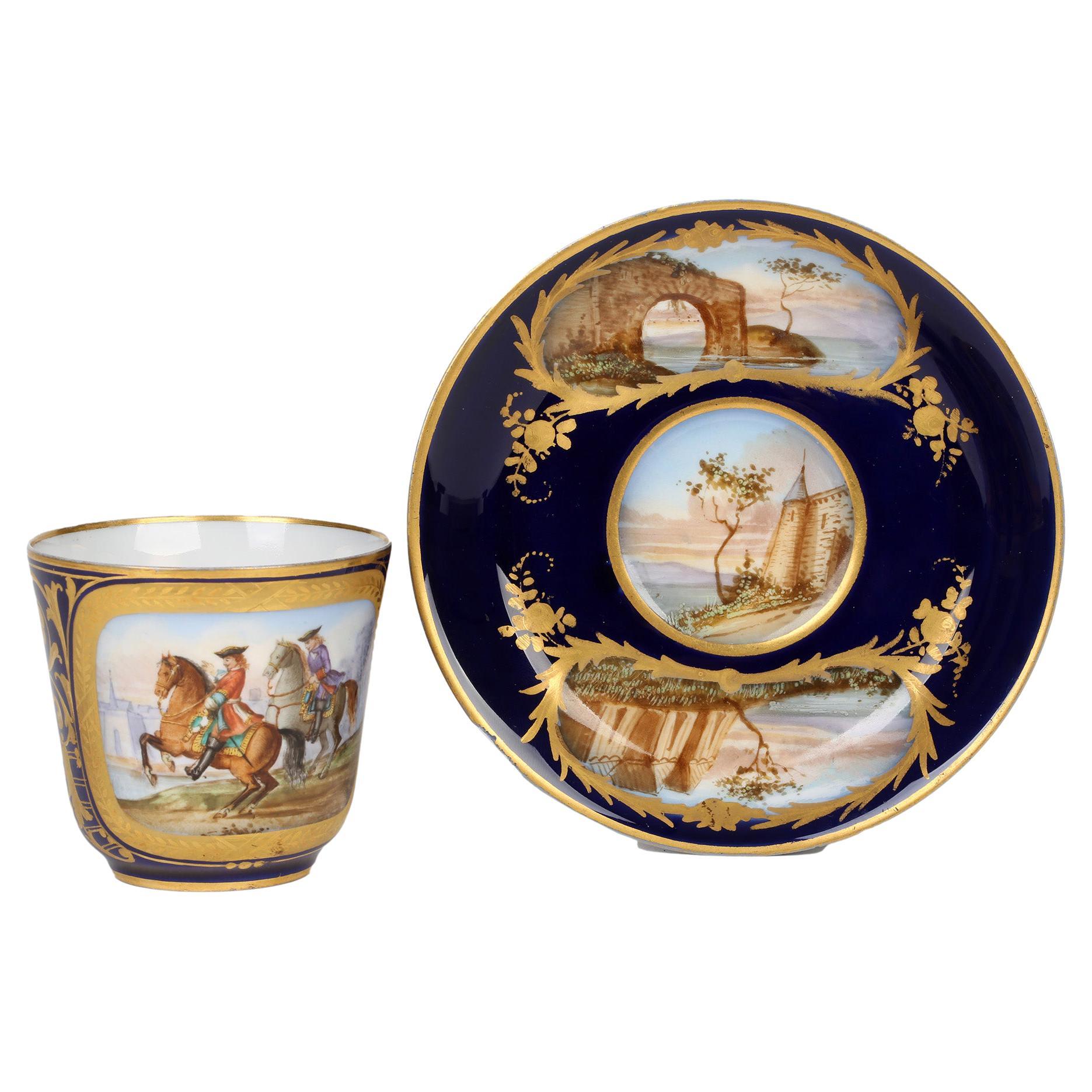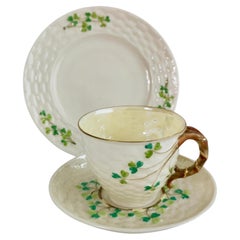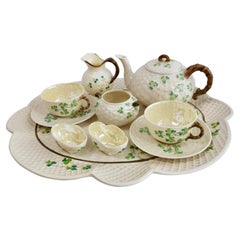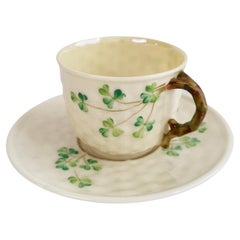
Belleek Demitasse Cup and Saucer, Shamrock Pattern, 1926-1946
View Similar Items
Want more images or videos?
Request additional images or videos from the seller
1 of 13
Belleek Demitasse Cup and Saucer, Shamrock Pattern, 1926-1946
About the Item
- Creator:Belleek Pottery Ltd. (Maker)
- Dimensions:Height: 1 in (2.54 cm)Width: 1 in (2.54 cm)Depth: 1 in (2.54 cm)
- Sold As:Set of 2
- Style:Arts and Crafts (In the Style Of)
- Materials and Techniques:
- Place of Origin:
- Period:
- Date of Manufacture:1926-1946
- Condition:Wear consistent with age and use. The set is in perfect antique condition without any damage, repairs, crazing or significant wear.
- Seller Location:London, GB
- Reference Number:Seller: A-BEL10g1stDibs: LU4805128550742
About the Seller
5.0
Platinum Seller
These expertly vetted sellers are 1stDibs' most experienced sellers and are rated highest by our customers.
Established in 2016
1stDibs seller since 2019
208 sales on 1stDibs
More From This SellerView All
- Belleek Coffee Cup Trio, Shamrock Pattern, 1891-1926By Belleek Pottery Ltd.Located in London, GBThis is a very charming coffee cup trio made by Belleek in the Shamrock design, consisting of a coffee cup, a saucer and a little cake plate. It has the 2nd Black Mark, which was used between 1891 and 1926. Given the quality of the porcelain we think the date of production is probably closer to 1891 than 1926. If you ever thought Belleek fine china looks, sounds and feels unique, you are right. There is a back story to this extraordinarily fine Irish eggshell porcelain, which has an unusually high amount of "frit" and therefore is thinner and finer than any other china. Pottery in Belleek (in the now Northern-Irish area of Fermanagh) had started in 1849 with John Caldwell Bloomfield, who was a wealthy land owner. During the Irish famine...Category
Antique Late 19th Century Northern Irish Arts and Crafts Tea Sets
MaterialsPorcelain
- Belleek Cabaret Tea Set for Two, Shamrock Pattern, 1891-1946By Belleek Pottery Ltd.Located in London, GBThis is a rare and gorgeous Belleek cabaret tea service, or dejeuner set, in the famous Shamrock design, consisting of a teapot, two teacups and saucers, a milk jug, a sugar bowl, and a salt and pepper, all placed on a large matching tray. It is extremely rare to come across an entire cabaret set of these antique items, particularly when in such good condition, so this is a rare opportunity! If you ever thought Belleek fine china looks, sounds and feels unique, you are right. There is a back story to this extraordinarily fine Irish eggshell porcelain, which has an unusually high amount of "frit" and therefore is thinner and finer than any other china. Pottery in Belleek (in the now Northern-Irish area of Fermanagh) had started in 1849 with John Caldwell Bloomfield, who was a wealthy land owner. During the Irish famine...Category
Antique Late 19th Century Northern Irish Victorian Tea Sets
MaterialsPorcelain
- Belleek Cabaret Tea Set for Two, Cream Grass Pattern, Victorian 1863-1891By Belleek Pottery Ltd.Located in London, GBThis is a beautiful and very rare Belleek cabaret set in the Grass design, consisting of a teapot, two teacups and saucers, a milk jug and a lidded sugar bowl, all placed on a large tray. All items carry the 1st Black Mark, which was used between 1863 and 1891. It is extremely rare to come across an entire cabaret set of these antique items, particularly when in such fabulous condition, so this is a rare opportunity! If you ever thought Belleek fine china looks, sounds and feels unique, you are right. There is a back story to this extraordinarily fine Irish eggshell porcelain, which has an unusually high amount of "frit" and therefore is thinner and finer than any other china. Pottery in Belleek (in the now Northern-Irish area of Fermanagh) had started in 1849 with John Caldwell Bloomfield, who was a wealthy land owner. During the Irish famine...Category
Antique Late 19th Century Northern Irish Victorian Tea Sets
MaterialsPorcelain
- Belleek Cabaret Tea Set, Cream Cob Lustre, Erne, Victorian, 1890sBy Belleek Pottery Ltd.Located in London, GBThis is an extremely rare Belleek cabaret set for two, or "tête-à-tête", made in the Erne series brought out in the 1890s. The items carry the 2nd Black Mark, used between 1891 and 1926. The set consists of a teapot, a milk jug, a sugar bowl, two teacups and saucers, and a large matching tray. This set is very fine and with its restrained cream-white colour it would make a wonderful wedding gift! If you ever thought Belleek fine china looks, sounds and feels unique, you are right. There is a back story to this extraordinarily fine Irish eggshell porcelain, which has an unusually high amount of "frit" and therefore is thinner and finer than any other china. Pottery in Belleek (in the now Northern-Irish area of Fermanagh) had started in 1849 with John Caldwell Bloomfield, who was a wealthy land owner. During the Irish famine he realised that unless he would find a way for his tenants to make a profit off the land, they would starve. Agriculture had become impossible due to the agricultural diseases. This caused millions to starve and more millions to leave. As an amateur mineralogist, John Caldwell Bloomfield realised that his land had exactly the right mineral deposits to be used as clay for porcelain. He involved several investors and scientists and after many years of research, trial, error, the building of a railway line to import coal from England, and building a factory, the Belleek pottery resulted, employing the local people and soon producing the finest china made with clay from the Belleek area. What had started as a way to fend off famine among the local tenants had became a story of incredible success by the 1880s as Queen Victoria fell in love with the fine white china and the many homely, slightly bizarre but nature-loving designs; this was different from English tradition, yet it was very much to the taste of the British who had developed a real love for home-made fine china since it was introduced in the late 18th Century. Belleek not only brought out many tea services, but started a new tradition of intricately woven porcelain baskets. Soon the English nobility started to place big orders and the pottery is still flourishing today and selling its wares the world over, while in England most potteries have long disappeared. Belleek made many cabaret services, often called breakfast services or "tête-à-tête" services; these were used to carry breakfast tea up to the bedroom. Queen Victoria bought one in the Echinus style during a visit to the factory in the 1860s, and ever since Belleek's cabaret services have been in great demand. Nowadays there are very few of these left and it is rare to find a full service like this. The Erne series was named after the river right besides the Belleek factory. This river forms the border between the Republic of Ireland and Northern Ireland, with the factory on the Northern Irish end of the bridge at Belleek. The pattern seems to be a play on the baskets and nets of the fishermen who once fished the abundant trout and salmon on the river Erne and the lake that belongs to it. The items carry the second Black Mark, which was used between 1891 and 1926, however the very fine quality of the porcelain indicates that most pieces of the set are more likely to be from the 1890s than from the 20th Century. You will see that the shade of cob lustre is different on each item; this is normal for Belleek tea sets...Category
Antique Late 19th Century Northern Irish Victorian Tea Sets
MaterialsPorcelain
- Riley Coffee Cup, Gilt Chevron Zigzag Pattern, Regency, circa 1815By J&R RileyLocated in London, GBThis is a beautiful coffee cup and saucer made by Riley in about 1815, decorated in a striking gilt chevron pattern with a rather psychedelic zigzag effect. The John & Richard Ril...Category
Antique 1810s English Regency Porcelain
MaterialsPorcelain
- Derby Porcelain Coffee Cup, Artichoke Pattern in Turquoise, Georgian ca 1785By DerbyLocated in London, GBThis is a beautiful coffee cup and saucer made by Derby in about 1785. The set has the distinctive "artichoke" moulding and a bright turquoise ground with the white artichoke surface...Category
Antique 1780s English George III Tea Sets
MaterialsPorcelain
You May Also Like
- Spode Indian Tree Cup and SaucerLocated in Asheville, NCThis is an absolutely fabulous antique Copeland Spode Indian tree cup and saucer. It is a spectacular example of Spode porcelain with rust and orange...Category
Antique 18th Century and Earlier English Porcelain
MaterialsPorcelain
- Royal Doulton White Blue Gold Coffee or Tea Demitasse Cup & Saucer, circa 19th CBy Royal Daulton, Davis Collamore & Co Ltd. 1Located in New York, NYA very special English Royal Doulton for luxury retailer Davis Collamore & Co LTD, espresso coffee or tea demitasse cup and saucer set, ci...Category
Antique Late 19th Century English Tea Sets
MaterialsGold
- White and Gilt Neoclassical Arrow Cup & SaucerLocated in New York, NYWhite and gilt neoclassical arrow cup & saucer. Empire period designed white and gilt porcelain with cupid's arrows and floral sprays. Under-glaze ...Category
Antique Early 19th Century Austrian Empire Porcelain
MaterialsPorcelain
- Vintage Limoges “Shalimar” Porcelain Demitasse Cup & Saucer '4 Cups/5 Saucers'By Haviland & Co.Located in Naples, FLExcellent condition~no chips, cracks or crazing; “Shalimar” pattern by Haviland Limoges; “Shalimar”, in production between 1971 to 1992 is in the Louis XV shape with gold trim and ac...Category
Late 20th Century French Tea Sets
MaterialsPorcelain
$100 Sale Price20% Off - Antique Early 19th Century Spode Porcelain Pattern Number 2408 Tea Cup & SaucerBy SpodeLocated in Philadelphia, PAA fine antique Spode porcelain cup & saucer. Pattern no. 2408 Decorated throughout with a cobalt floral patttern and extensive gilding. Simply a great cup & saucer from Spod...Category
Antique Early 19th Century English Neoclassical Porcelain
MaterialsPorcelain
- Sevres Hand Painted Matched Porcelain Cabinet Cup and SaucerBy Manufacture Nationale de SèvresLocated in Bishop's Stortford, HertfordshireA fine antique French matched hand painted porcelain cabinet cup and saucer painted with various scenes by Sevres and dating from the latter 19th century. ...Category
Antique Late 19th Century French Late Victorian Tea Sets
MaterialsPorcelain
Recently Viewed
View AllMore Ways To Browse
Belleek China
Belleek Shell
Vintage Belleek China
Antique Irish Tea Cups
Belleek Shamrock
Bizarre Coffee Set
Irish Belleek Shamrocks
Shamrock Belleek
Antique Demitasse Cup
Antique Demitasse Cups
Demitasse Cups Antique
Antique Demitasse Cup And Saucer
Antique Demitasse Cup Saucer
Antique Demitasse Cups And Saucers
Black Demitasse Cup And Saucer
Demitasse Cups And Saucers Antique
Antique Eggshell Porcelain
Belleek Basket

